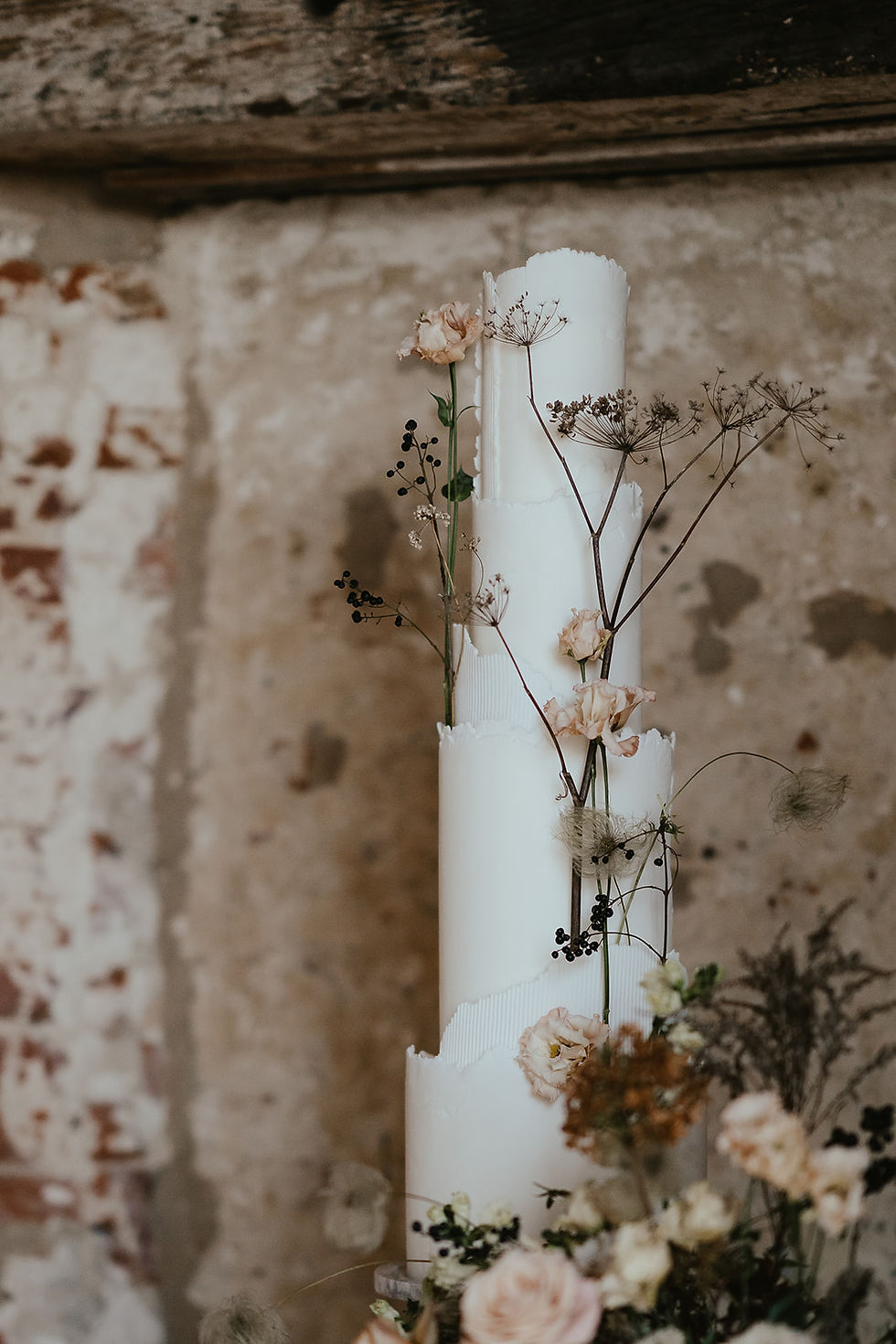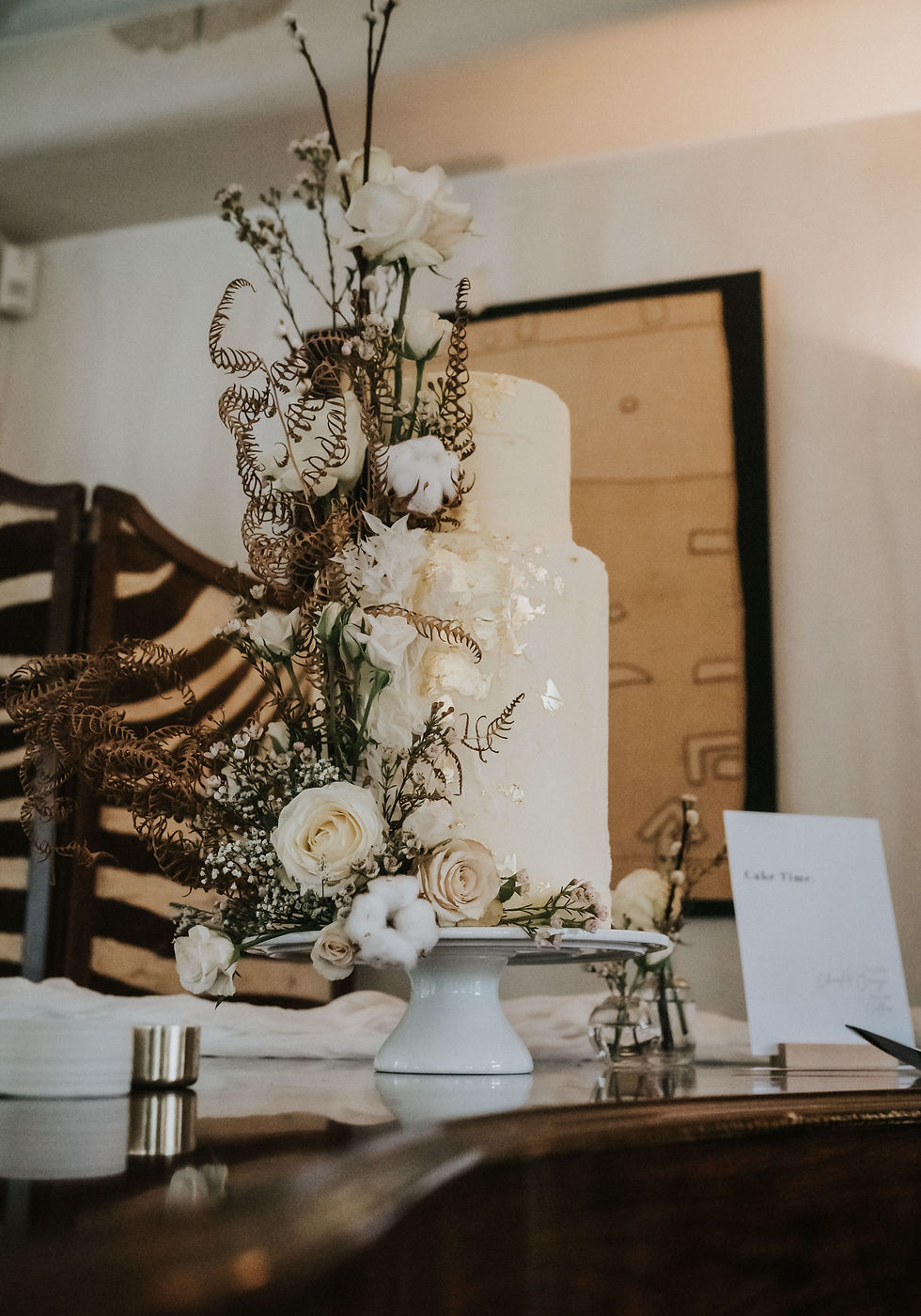Blooming Beauties: Navigating the New FSA Guidelines for Fresh and Dried Flowers on Cakes
- Imogen

- Feb 16, 2024
- 2 min read
The world of cake decoration has seen a blossoming trend in recent years, with the use of fresh and dried flowers becoming increasingly popular. Whether it's a rustic wedding cake or a whimsical birthday creation, flowers add a touch of natural elegance. However, with the growing interest in this trend, concerns about food safety have prompted the Food Standards Agency (FSA) to issue new guidelines for the use of fresh and dried flowers on cakes. These guidelines will be released in Spring 2024. In this blog post, we'll explore these guidelines and help you navigate the blooming world of floral cake decorations.

Fresh Flowers:
Fresh flowers can be a stunning addition to any cake, but it's crucial to exercise caution when selecting and arranging them. The FSA emphasises that only edible flowers should be used on cakes. This ensures that the flowers not only enhance the visual appeal but also meet safety standards.
Edible flowers suitable for cake decoration include varieties such as pansies, violets, marigolds, and nasturtiums. It is essential to verify the source of the flowers and ensure they have been grown without the use of pesticides or other harmful chemicals. Flowers from reputable suppliers, farmers' markets, or your own garden (if grown organically) are excellent choices.
Before placing the flowers on the cake, they should be thoroughly washed and dried.

Dried Flowers:
Dried flowers are another charming option for cake decoration, providing a delicate and timeless aesthetic. The FSA advises that only culinary-grade dried flowers be used to ensure they are safe for consumption. These can be found at specialty food stores or online retailers catering to baking and culinary needs.
Prior to adorning the cake, inspect the dried flowers for any signs of mould or contamination. It's crucial to handle them with clean, dry hands to prevent any potential transfer of harmful substances.

Application on Cakes:
When placing fresh or dried flowers on cakes, a food-safe barrier should be used to separate the flowers from the cake's surface. This could be in the form of a thin layer of fondant or parchment paper, ensuring that the flowers do not come into direct contact with the cake.
For cakes meant for special occasions like weddings or birthdays, it's advisable to communicate with the florist to guarantee a harmonious blend of colours and themes.
It is advisable to keep a Hazard Analysis and Critical Control Point (HACCP) Register for every cake that you include fresh or dried flowers on. More on HACCP here.

Conclusion:
As the popularity of using fresh and dried flowers on cakes continues to grow, adherence to the latest FSA guidelines becomes paramount. By selecting edible varieties, ensuring proper cleaning and preparation, and using a food-safe barrier, you can create stunning floral cake designs that are not only visually captivating but also adhere to the highest standards of food safety. So, let your creativity bloom, and may your cakes be as beautiful as they are delicious!








Comments